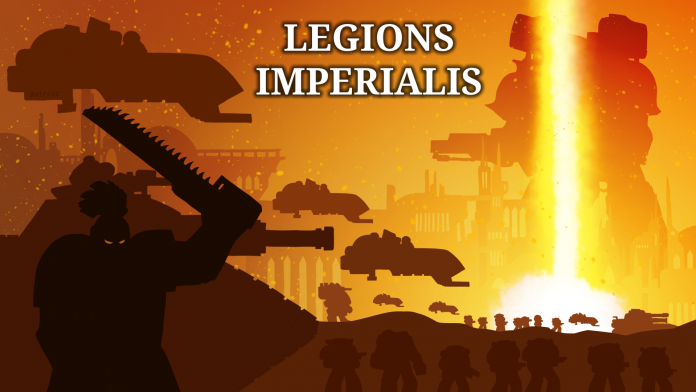With the recent launch of Legions Imperialis and new kits releasing on a fairly regular basis, it’s worth looking at the history of epic scale wargaming in the 41st millennium – how it started and how we got to the current version of the game.
Wargaming at smaller scales (2-15mm) has a long and storied history and it was almost inevitable that Games Workshop would become interested in some form of it before long. While they had previously put out small scale ranges (the 1981 15mm scale range for Traveller and 1984’s Battlecars) this was 1/300 scale (and there’s a lot of space to argue about scales, especially as Epic had no coherent scale compared to 40k until Legiones Imperialis) and marked GW’s and Citadel’s first ventures into a scale that small and a range that big.
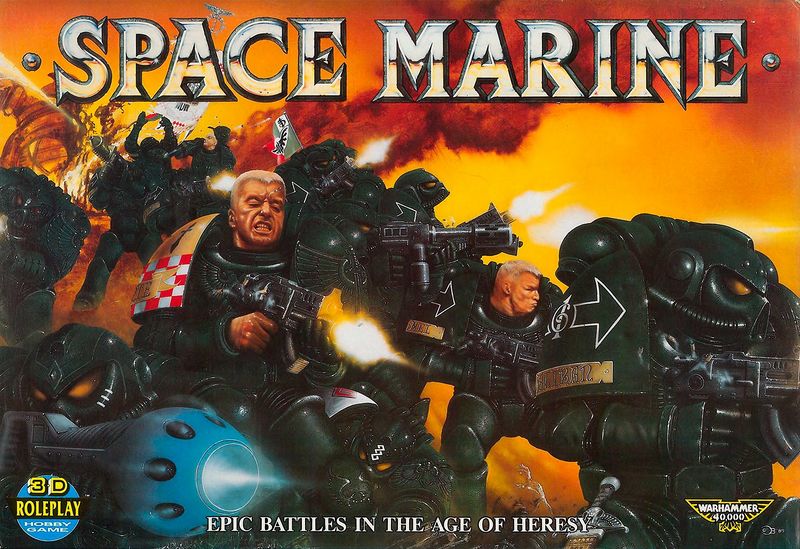
The Beginning – Titanicus and Space Marine 1st Edition
Epic scale miniatures started with the Adeptus Titanicus game, released in December 1988. This went through a development phase where it was originally going to be a number of metal titans of different designs, before the plastic beetleback Warlord titan became the standard unit in the game.

A number of metal prototypes were produced and used in playtesting and art, and art was produced for a number of models never produced (though the 2018 Adeptus Titanicus Warmaster titan draws heavily from one piece of 1988 art).
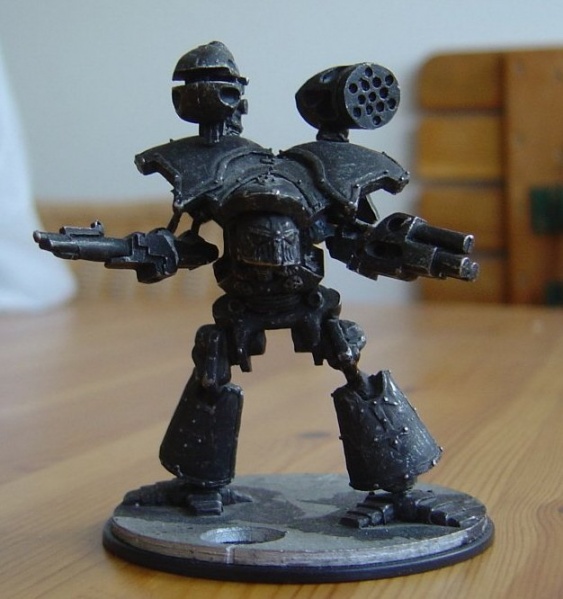
It didn’t take long for Titanicus to start having additional units added, with January 1989 seeing the metal Reaver and Warhound titans, and February seeing the Eldar Phantom titan and the first non-titan models released. These were the Eldar and Space Marine dreadnoughts, Eldar War Walker and Field Artillery, and Imperial Land Raider and Rhino, all of which were in metal. In retrospect some of these were clearly prototypes for the plastic sprues which would be included in the July release of the Epic boxed set, which contained sprues of tactical marines with Rhinos and Land Raiders. This was not the first time GW would release prototypes which would later come back as plastic kits (early terminators and genestealers and the Direwolf that some of us still have in the box waiting to build and paint being a couple of random examples) but GW, particularly at this time, had a very aggressive schedule of releases and sculpted minis generally weren’t allowed to sit around gathering dust when they could be cast up and shipped out.
This was rapidly followed by the first Ork releases in metal, and the plastic Ork and Eldar sprues giving us Guardians and Falcon Grav Tanks, and Ork Boyz and Battlewagons. Rules for Orks and Eldar were published in the Codex Titanicus supplement, and White Dwarf introduced new rules and units as well, including plenty of development of the core game. More metal miniatures and plastic sprues followed, bringing new armies and much greater variety of units. A lot of what is thought of as the 1991 edition range was actually launched during the 1st edition of the game.
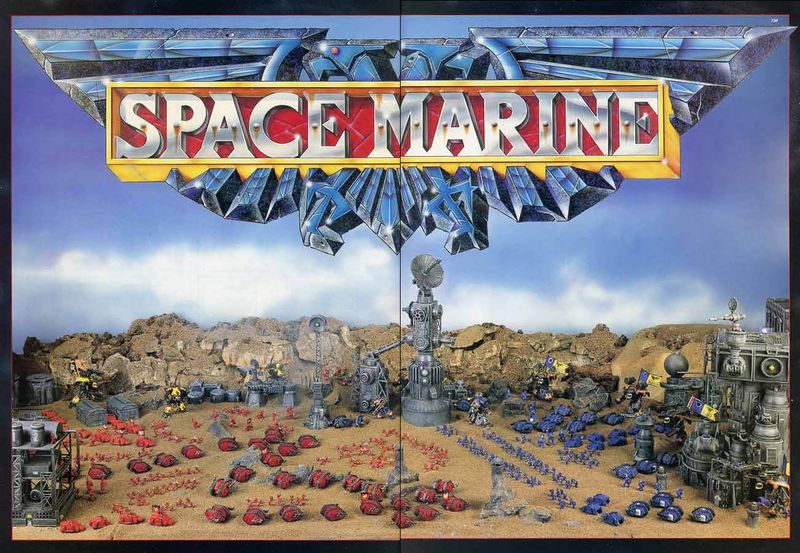
As an edition it was very much a first draft, and while it laid down some things that carried into the 1991 Epic Space Marine 2nd edition, it had a number of flaws in that it was often overly complex (weapons on vehicles had individual firing arcs for god’s sake), and army construction was entirely free form, to the point where you purchased individual stands and units (though army construction rules were later published in White Dwarf). Infantry without heavy weapons had a range of 24cm, and the scenarios given in the core rulebook were fairly limited in size (generally under 2k in a game where a single stand of tactical infantry with no heavy weapons was 50 points).
You can tell when something is a first draft when new units, factions and unit types are getting added every couple of months, and the process of “sculpt the minis, write the rules, ship it and then see the sales/feedback and course correct” is very emblematic of the process for late 80s/early 90s Games Workshop.
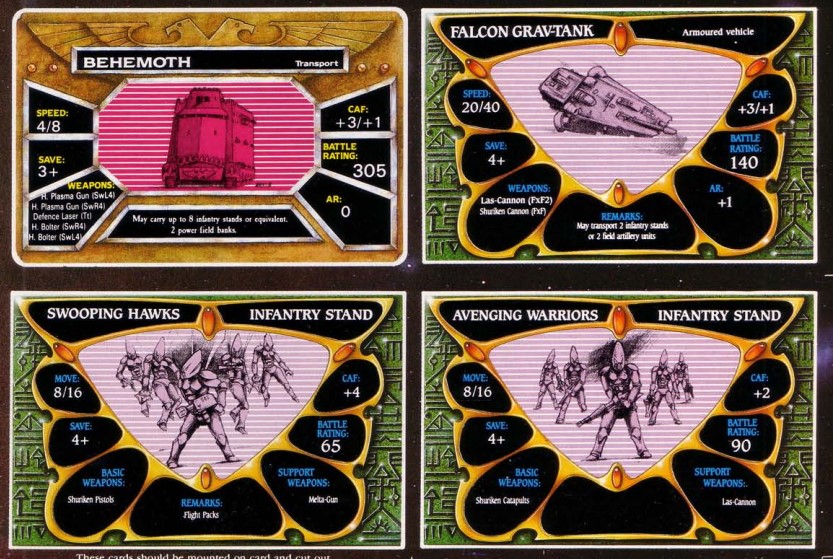
That said, this original incarnation of Epic contained a number of ideas that would stick – Close Attack Factor and how to resolve melee, unit orders and the turn structure being the obvious ones. Space Marine 1989 contained some good core ideas, but needed editing, polishing and balancing to become a ‘good’ game. The designers felt that tanks were very ‘samey’ and needed to be more interesting – their thoughts are covered in detail in White Dwarf issue 141 (September 1991) in the Space Marine article by Rick Priestley.
Players wanted a game with the cool stuff, large titan forces, entire companies of vehicles and infantry, and the 1989 version couldn’t really deliver that without getting bogged down. This is why games get 2nd editions.
The Classic Era – Epic Space Marine and Titan Legions
And Epic did. 2nd Edition Space Marine was packed full of models and terrain, with plastic/cardboard hybrid buildings and enough models to give a company or two and a bit more for Space Marines, Orks and Eldar along with unit cards that matched metal models and the other plastic sprues being released.
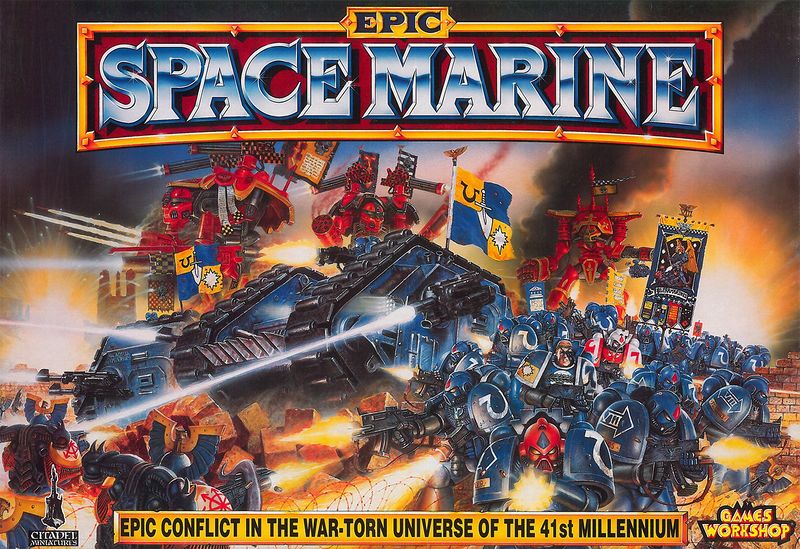
The edition simplified the 1st edition rules, in particular army construction with the introduction of unit cards where you just bought a formation (a company, ork clan or eldar warhost for example) and could add a Special card (a titan, special character, etc) and up to five support cards (a dreadnought squadron, artillery battery, etc). Blisters of metal miniatures usually corresponded with a unit card, making expanding forces simple. This meant your army would typically be formed around a couple of companies, maybe even three, in a 3000 point game, and a mix of infantry and armour was virtually baked into the system.
2nd edition made the game significantly easier to plan and play, and being able to grab your army cards and build your army fairly quickly using them made setting up games a lot easier.
While the launch box still used the single unit sprues seen in 1st edition, Space Marine, Imperial Guard and Ork multi unit sprues were released towards the end of 1st edition, and Eldar, Squat and Chaos sprues were released during early 2nd.
Epic 2nd edition received a lot of attention and White Dwarf support. The inaugural battle report for the edition, in White Dwarf 143, was between Andy Chamber’s Blood Angels and Jervis Johnson’s Alaitoc Craftworld Eldar, and used 6000 point forces and a number of units not yet published for 2nd edition, as well as a number released that month in the Epic Stompers boxed set (a new sprue giving dreadnoughts to most factions and a number of other units like Chaos Androids, Terminators and Stompers). The core box for Epic gave army cards for Space Marines, Orks and Eldar, with 57 army cards covering the models in the box and some other models available. For the other armies, you needed to wait for additional cards in either White Dwarf or expansions, but they were being released fairly rapidly in White Dwarf, along with new models for various tanks and other warmachines available often before the expansion they were in.
And those expansions came, with Armies of the Imperium (with Space Marines and Imperial Guard) in 1991, Renegades (with Chaos and Eldar) and Ork and Squat Warlords (guess) in 1992, Titan Legions in 1994 and Hive War (introducing an entirely new Tyranids range) in 1995. Armies of the Imperium was written by Rick Priestley, and the rest of the expansions were by Andy Chambers (this was what he was brought into the studio to do).
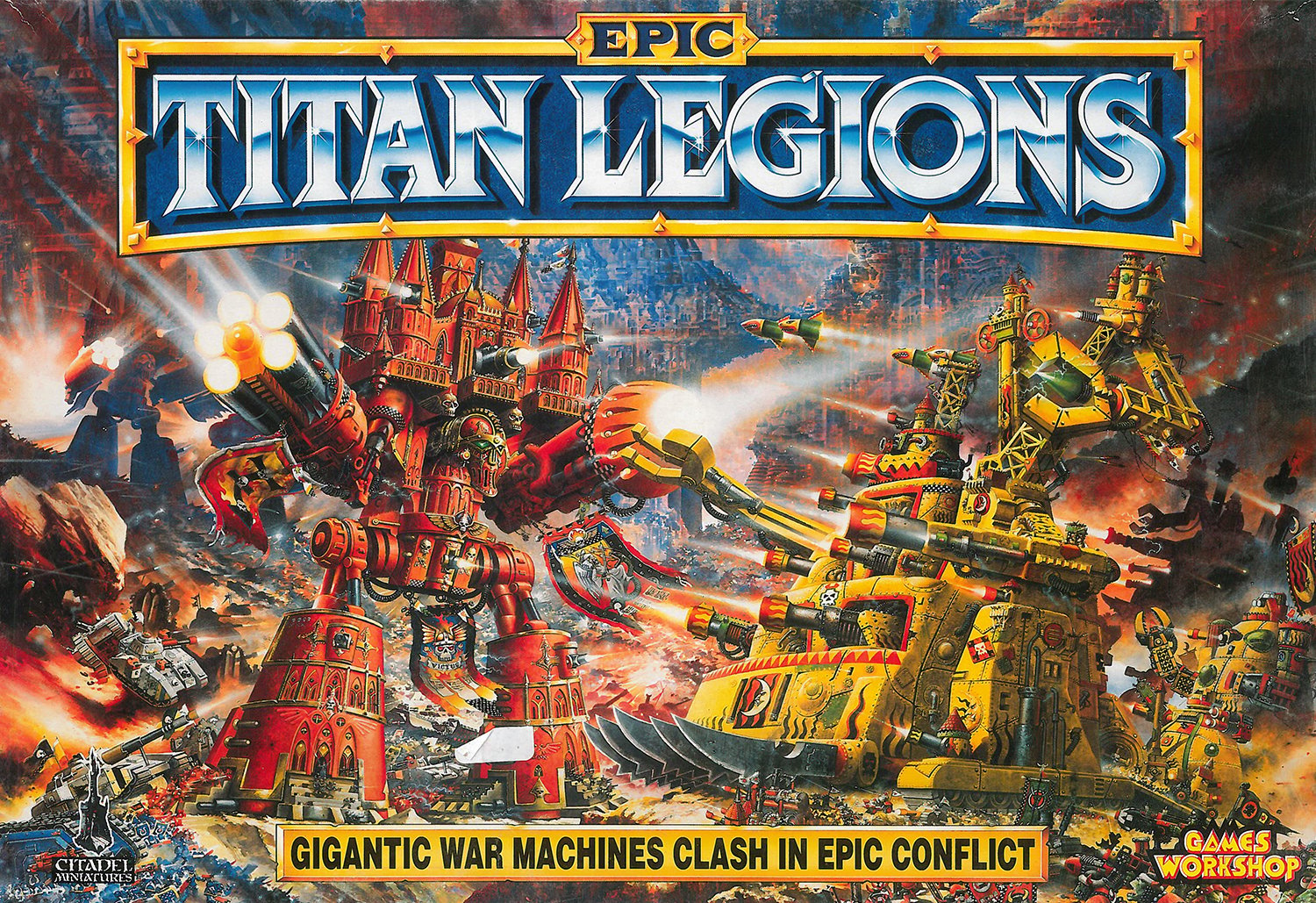
These expansions added huge numbers of additional units, with colossal titans in the Imperator and Warbringer classes, and the Mega Gargant for the Orks, as well as huge numbers of additional vehicles that paved the way for a number of the vehicles we see in 40k today, like the Revenant Scout Titan, the various types of Imperial Knight, Ork Fighta-Bommers, Stompas, etc. Armies of the Imperium introduced the Space Wolf Great Companies well before the 40k White Dwarf army list and model range for them in WD157.
Bringing upscaled Epic models to 40k led to Armorcast working with GW, and the introduction of more vehicle kits that ended up with GW developing in house resin kits for large tanks, which they designed and sold under the Forgeworld branding.
Epic provided a canvas for miniature designers to fill in a lot of 40k and space for writers to fill in more of the background details and structures that 40k armies were part of, and the aesthetic of 40k was further developed and refined in this period.
Epic also demonstrated the big box release model which became the staple of 40k and Warhammer Fantasy (with the 40k 2nd edition box in 1993 and the Warhammer Fantasy 4th edition box in 1992), showing that big boxes could drive sales and the idea of ‘starter boxes’ had value. GW continues with this sales model to this day.
The edition had a number of problems though, and the drive by Rick and Andy to ensure that vehicles did something interesting and didn’t basically all play the same with only a slight variation meant that there were piles of special rules, sometimes accompanied by tables where you rolled to see what things did, that weighed the edition down.
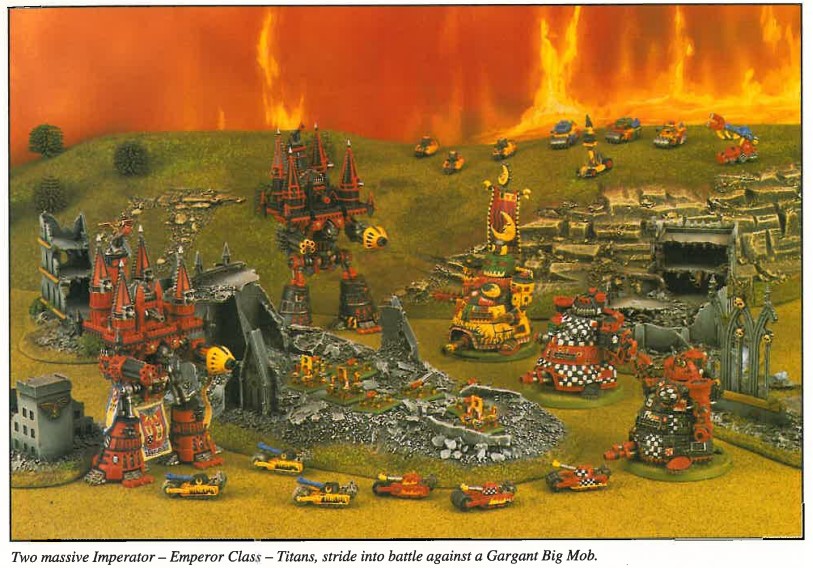
There were also a fair few things that were no-brainers to take, and some units were a bit broken (Eldar Falcon Grav-tanks for example, which on first fire orders could pop up from behind terrain and could only be fired at by units on first fire orders, which is classic Eldar bullshit), but balance wasn’t terrible, especially considering we are talking about early 90s game design.
Nothing lasts forever though, and after 1995 GW had run out of new content to add to Epic (the Exodite Dragon Warriors Jes Goodwin made some prototypes for were never officially released in the UK, though mail order made them available in the US for a short time later), and a revised edition was planned.
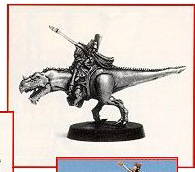
Epic 40,000
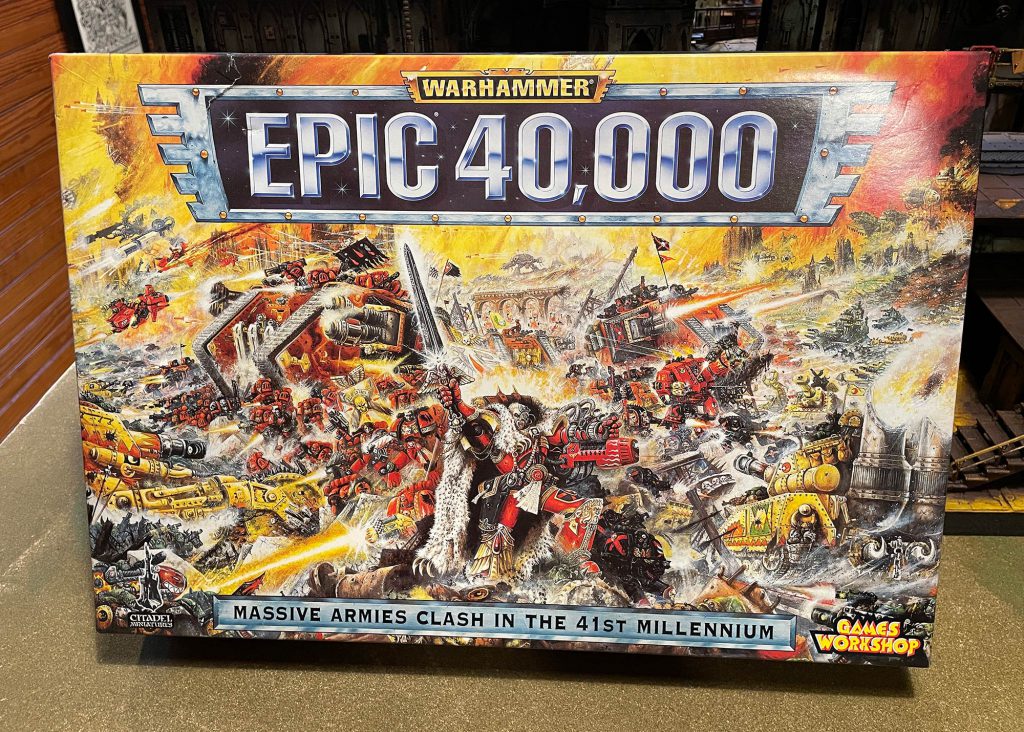
Space Marine and Titan Legions had barely died away when the studio began working on the next iteration of small scale gaming in the 40k Universe, with 1997’s Epic 40,000. Epic 40k had two major aims – to reduce the sheer cruft and dense granular detail of previous editions and to expand the scope of the game to a more strategic, top-level experience. In many ways it’s the same design philosophy that would lead to the changeover from 2nd to 3rd edition 40k – simplify, speed up, zoom out. Splashing in White Dwarf 208 and leading White Dwarf content until issue 219 saw it essentially slip out of mainstream coverage altogether, this was a classic example of a GW side game from the early 90s, and its release, along with the sunk costs in time, money and tooling, helped to shepherd the end of the sales model, as we’ve covered in other History of Miniature Violence articles.
While the models remained the same size, everything else about the game changed. Gone were the stat cards, set force sizes and individual weapon profiles, and in their place came broad detachment options, universal special rules and streamlined weapons, presenting a cleaner, quicker, play experience with a renewed focus on movement. Armies could be double the size of prior editions, an expansion made possible by the advances in metal and plastic tooling GW made in the 1990s, and spearheaded by a substantial range refresh for many of the armies. While plastics remained the same for most of the armies – drawing on the excellent work done in 1990 in producing multi-unit plastic sprues – Epic 40k is the era of the best small scale metals GW have ever produced.
Space Marines, Imperial Guard (and accompanying titans – only the warlord got an updated model, however), Eldar, Orks, Tyranids and – models bafflingly following years after the initial release – Chaos formed the core of the range. The more esoteric units – at the time including knights, demon engines and the majority of the titans – didn’t receive updated models, and ancient moulds from the initial Space Marine release were quietly retired. What was released, though, had a substantial impact on the aesthetic of Warhammer 40k, and still holds up today. The Guard and Eldar releases redefined what both races could look like if GW’s mould making and plastics tooling technology could stretch that little bit further than the limits it faced in 1997, and the last two decades has seen Forge World and Games Workshop producing in 28mm what Epic established in 6/8mm. Other armies went off in different directions – Tyranids and Orks in Epic 40k still drew very much from their classic Rogue Trader aesthetics with some sculpts based on 2nd edition.
The structure of the game was notably different from earlier editions, but the change that everyone remembers – and still ignites debate – is the introduction of blast markers. Blast markers introduced friction to the game, representing the pressure and impact of combat on the effectiveness of formations, making them shoot, fight and command with increasing difficulty as the blast markers mounted. It’s something that was, and remains, fairly unusual for a games workshop game, but was very much in vogue at the time, with Battlefleet Gothic taking a similar approach shortly after. From my perspective, blast markers not only work but add an interesting element of challenge, command and control to GW games that rarely attempt to operate on a stategic level – your units would not always fight at full efficiency, even if everyone remained alive after a round of enemy fire, and rightly so. Blast markers might have come and gone, but they were a sign that the Design Studio was interested in a more strategic element – not just 40k but small, a different level of game altogether.
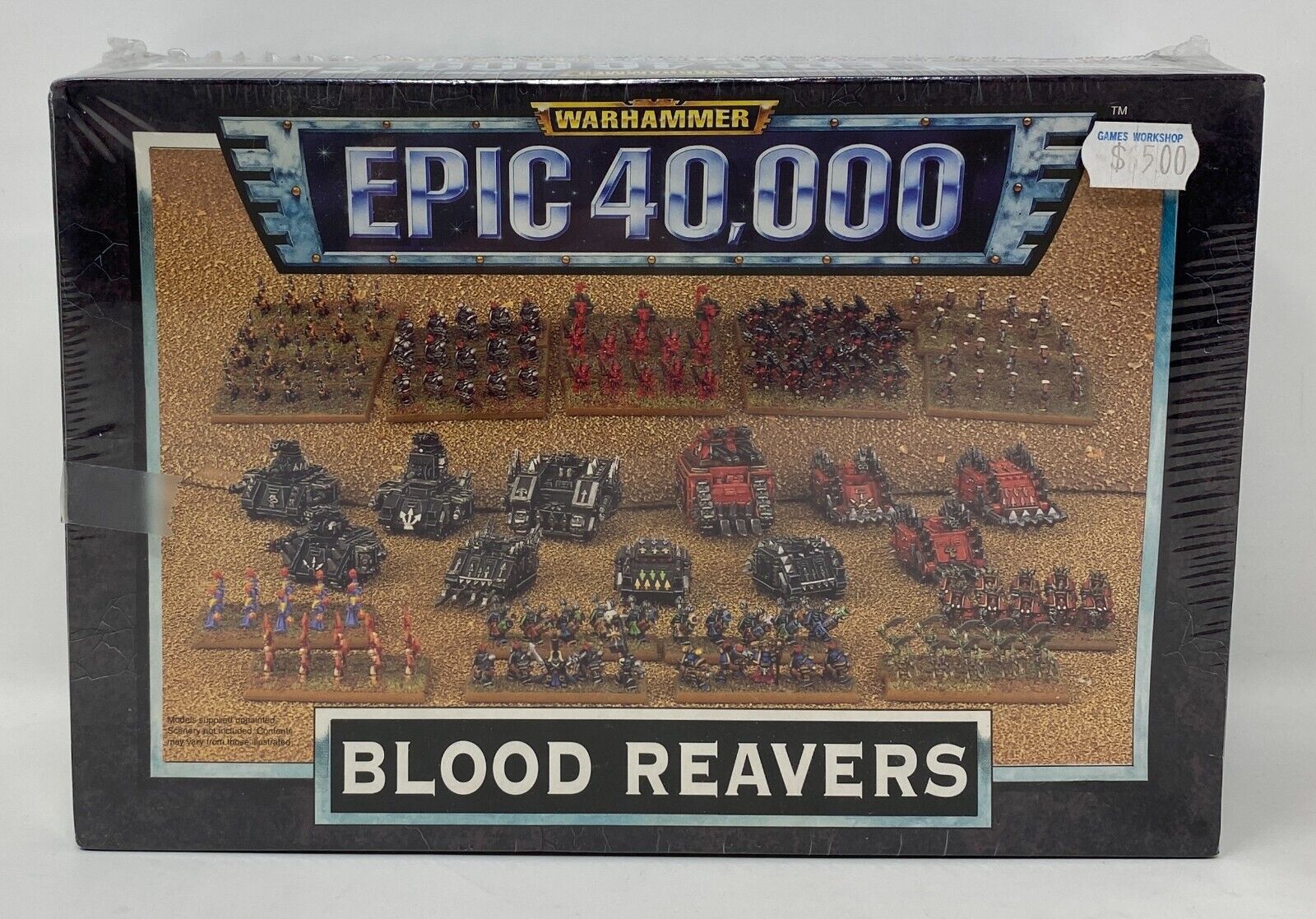
Support continued for Epic 40,000 through White Dwarf and through the official Epic 40k magazine, collating pre-published material, new articles and the best of submissions to the Citadel Journal. Like all non-core games from the late 90s and early 00s however, Epic quickly faded from stores and interest, with only fitful rumours of a return.
Epic Armageddon
GW’s non-core games moved to Fanatic (supported by Fanatic Magazine) and the Specialist Games studio, which allowed the game to continue, albeit on a shoestring budget. The studio would launch new rulebooks for the non-core games with limited metal releases. Epic Armageddon launched in 2003 with Orks, Imperial Guard, and Space Marines. Epic Armageddon rowed back on much of the abstraction of Epic 40k (which the studio had loved for its elegance but which went down like a bucket of cold sick with a playerbase who loved crunch), but kept blast markers and introduced Anti-Personnel (AP) and Anti-tank (AT) profiles for weapons to differentiate weapons good against infantry and weapons good against vehicles (no longer could lasgun fire bring down titans if you threw enough dice at them).
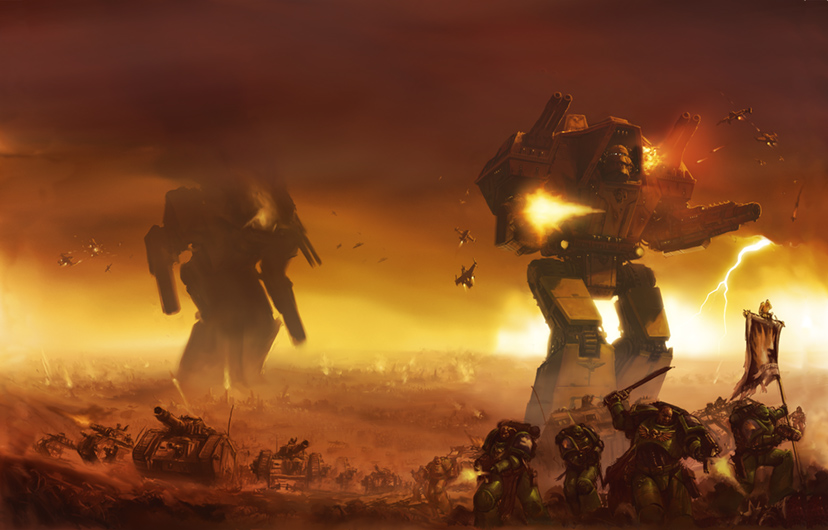
The original vision was to add another army each year, with the first one being in the campaign supplement Swordwind, which brought Eldar and Imperial Guard Siegemasters to the game.
There were a number of controversial parts of the launch, as GW removed sections of the multi-unit sprues that had been brought out for Epic 40,000 in order to release metal castings of the plastic miniatures in the removed sections as separate units for about £1 a stand. The casting quality was also highly variable and a lot of online criticism came due to miscasts in the retail chain. While the rules were good, and combined some elements of Epic 40,000 and 2nd edition (namely there was enough crunch that units were interesting and behaved differently), it was the way the game was developed after launch that made it particularly interesting.
This was the time when GW ran an official forum where they interacted with the community. It went about as well as you can imagine (people can argue about whether online culture then was as toxic as it is now), but the Specialist Games section was actually fairly well behaved. It was used to playtest openly with the community, and new army lists were released on the website for the community to playtest.
This also meant when Games Workshop Forum closed in 2006, the community there migrated to the Tactical Command forum and kept going, and when Specialist Games closed officially in 2013 (it had been winding down for a long while before then) the community took over maintaining Armageddon, as Net Epic Armageddon.
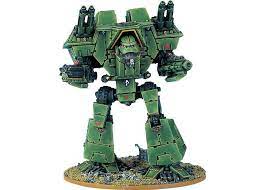
Over its lifetime (which people forget was ten years) Armageddon saw a variety of releases, including Forgeworld releases with Tau, Kroot and Grey Knights, as well as terrain and the aircraft in the Aeronautica game, released in 2006 by Forgeworld. There were no new plastics in this time and not a large amount of new metals after the initial releases (Rhinos and Rhino hull vehicles for the Space Marines all changed to the new MkII Rhino to match the 40k model), but there were further developments in the background and aesthetic, with the various aircraft from Forgeworld produced in both Epic and 40k scale.
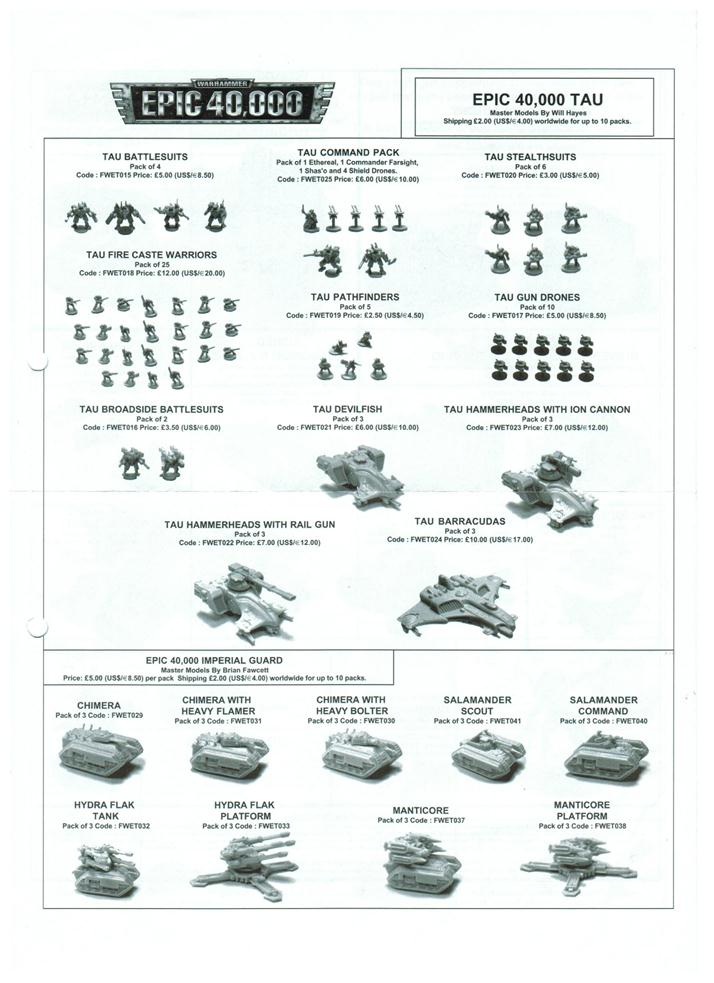
Bringing us to the Present
With the closure of Specialist Games and removal of the Specialist products from the GW and Forgeworld stores, it looked bleak for Epic gamers as the supply of new miniatures was cut off.
A variety of off brand alternatives and forumware appeared to fill demand from new players and those expanding their collections, and the community embraced these producers.
Games Workshop started to relaunch Specialist Games under the Forgeworld business unit only two years after officially closing it, with Blood Bowl being launched in 2016, Necromunda in 2017 and Adeptus Titanicus in 2018 (after being pushed back to allow for the creation of a plastic miniature range). Aeronautica Imperialis followed in 2019, and suddenly GW were releasing plastic model kits in a coherent scale for Epic, and it looked like a full Epic game was not just possible, but likely, with momentum building up with yearly releases for Aeronautica and more plastic titans rumoured for Titanicus.
Then Covid happened and it all went sideways. Aeronautica suffered from a slow release schedule and coming out during a global pandemic, and the sales momentum slowed down. Titanicus stalled and the planned products talked about in 2019 (specific Imperial and Chaos weapons for example, more mechanicum units, more ‘neutral’ titan legions and knight houses) never materialised.
At this point it’s obvious that attention was diverted to Legiones Imperialis (particularly given the number of plastic kits that have been previewed and that some of these have been released in resin for Titanicus in the interim) and an unfortunate side effect of creating 30k as a walled garden for Forgeworld/boxed games to control is that Aeronautica and Titanicus have been shelved with no new titans or planes expected unless they’re releases for Legiones Imperialis. Titanicus got a good final round of releases, with the Traitor and Loyalist faction books and the Campaign Compendium collecting the various supplements into large hardback volumes, but Aeronautica was heavily cut down, with only the Horus Heresy setting book kept in print and all other model kits (including Imperial Valkyries) discontinued.
The Future
GW have previewed a large number of plastic kits for Legiones Imperialis, and the vehicle kits released so far are superb. We’re literally at the beginning of the game’s life, and it’ll be interesting to see if Mechanicus, Talons of the Emperor, and other Heresy-era factions are added to the game over time.
Legions Imperialis will definitely bring a lot of players into playing epic scale, and we’ll see how this unfolds over the lifetime of the game, and how it affects the wider Epic community (I would bet that fan implementations of xenos will turn up after a few months, and we’ll see whether the independent events move away from Net Epic or Armageddon).
We’re already seeing events being planned, and I look forward to an interesting and vibrant community to play with and be part of.
Thanks for reading! If you have any questions or comments feel free to drop us a note in the Comments below or email us at contact@goonhammer.com. And if you want regular updates in your inbox, subscribe to our newsletter.
